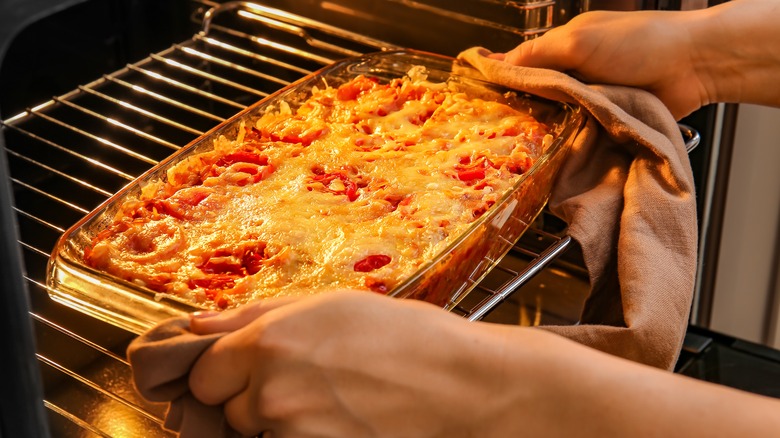Why You Should Par-Cook Some Ingredients For Casseroles
Casseroles are simply a warm hug in a big baking dish, soothing the soul while keeping you satiated. Dating back to the Great Depression and World Wars, The Seattle Times states that casseroles gained popularity due to their easy assembly and abundance of ingredients during hardship — they typically included vegetables, starches, and just enough meat to fill you up. In fact, according to Foodicles, some of the first popular casseroles created across all cultures are the French cassoulet, British pot pie, Italian lasagna, and Greek moussaka. Believe it or not, macaroni and cheese is the oldest known casserole recipe to be written, dating back to 1250. By the 20th century, casseroles were an easy solution to using up leftovers, usually involving cans of whatever creamy soup you had on hand.
Now, you may think that casseroles are as simple as throwing all your ingredients into a dish (hence the baked feta pasta phenomenon) and baking it until it's ready. Unfortunately, you still have to put quite a bit of work into this dish, depending on the ingredients you're using.
Not all ingredients cook at the same rate
It's fair to want to mix all casserole ingredients together at once, but if you're seeking tender veggies, silky smooth starches, and less risk of undercooking meat, Martha Stewart states that partially cooking certain ingredients beforehand is necessary. This technique will help you achieve optimal texture in your dish. However, it's important not to overcook them, as this will lead to them drying out when cooking in the oven.
A good rule of thumb is to give softer vegetables like broccoli, squash, and cauliflower a quick blanching. Harder vegetables like potatoes, carrots, and parsnips may need a longer par-cook, and onions require a quick sauté. If you don't want to wait for the water to boil for blanching, you can give these veggies a zap in the microwave in order to accomplish the same thing.
Furthermore, it's best to completely cook and drain the meat before adding it to the casserole dish. This will not only reduce the risk of undercooking but maintain the meat's texture while eliminating excess grease. From there, feel free to mix all the ingredients in a bowl and transfer to a baking dish, or assemble it right in the dish for oven-ready deliciousness.

